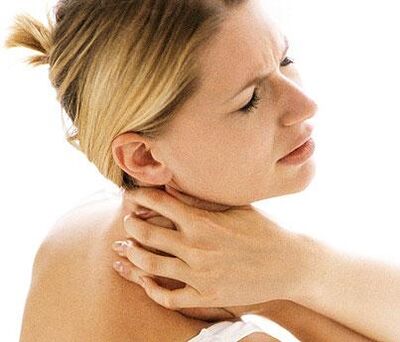What is the cause of accelerated osteochondrosis in the neck area? What is the manifestation of its specific symptoms? How to cure cervical osteochondrosis yourself in a quiet home? Many people suffering from osteochondrosis would like to hear the answer to these questions.

Osteochondrosis of the cervical region is the most common and unpleasant disease that affects modern young people aged 30-35 years. Cervical osteochondrosis develops as a result of a long stay in incorrect and tense postures - when working at the PC all day and also due to the habit of holding the phone over your shoulder. Very often this disease occurs due to prolonged exposure to vibration, or rather, when using powerful construction machinery or frequent driving during work. Also, this disease develops with improper posture, uncomfortable beds, a sedentary lifestyle, hereditary predisposition and other factors. Most often, in people with this disease, the neck hurts.
Osteochondrosis of the neck is considered a degenerative and dystrophic lesion of the intervertebral discs in the cervical spine. It occurs due to metabolic disorders in the cervical spine, in connection with which the structure of the intervertebral disc changes, that is, a special seal between the vertebrae.
Symptoms of cervical osteochondrosis are significantly different from osteochondrosis in other areas. This is one of the most dangerous types of osteochondrosis, since the nerve root of the spinal cord is injured and the blood supply to the brain is disrupted due to the compression of blood vessels. The reason is the peculiarity of the structure of the spine in the neck.
The great artery supplying the brain is vertebral, merging into the opening of theprocess of the cervical vertebra. A pathological change leads to the growth of bone and fibrous tissue and crushing of the artery. Due to the displacement of the spine, the normal function of these arteries is also disturbed.
The structure of the cervical spine is slightly different - the vertebrae are in close contact with each other. With even minor pathological changes, the normal functioning of all departments is disrupted - nerves and vessels are squeezed and displaced. As a result, the functions are disturbed - the sensitivity of the skin is disturbed, signs of dizziness are observed. You will experience ringing in your ears, headaches, severe fatigue, your vision and hearing will deteriorate, and you will stagger when you walk.
The main symptoms are:
- Pain in the neck, shoulders and arms. You will feel muscle weakness that will crunch in your neck when you turn your head.
- Sensation of a drawing pain in the heart. You will feel pain in your left hand. You will feel burning and pain in your shoulder blades.
- Don't be surprised by occasional headaches and increased tiredness and weakness.
- The pain hurts. Difficulty moving your head.
- Neck pain radiates into the arm, which can cause numbness in the fingers.
- Hearing and vision will deteriorate, pain in the hands will appear, the work of the heart and lungs will be disrupted, dizziness, nausea, numbness of the tongue and face will appear.
Treatment of cervical osteochondrosis

At first, osteochondrosis takes on a mild form and does not cause discomfort to a person. Drug treatment is not required at this stage, it is only necessary to carry out preventive measures to avoid more serious complications. It is necessary to improve working conditions, revise lifestyle and give up bad habits.
Get active, do morning exercises, stick to a diet, quit smoking and avoid heavy lifting. Maintain a straight posture, adopt the correct posture when sitting and lying down. Sign up for a course of therapeutic gymnastics.
Over the years, cervical osteochondrosis can progress and turn into a more complex form. Then the treatment is carried out using a conservative method. At this stage, you need to wear special collars, do physical therapy and get a massage.
In the most severe cases, drug therapy is required, that is, treatment is already carried out with the help of analgesics, antispasmodics and nonsteroidal anti-inflammatory drugs.
















































